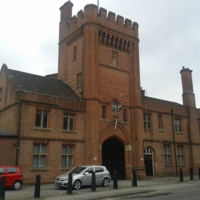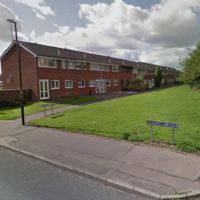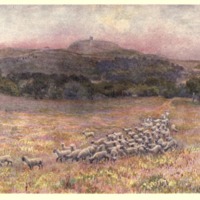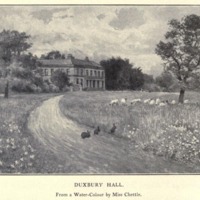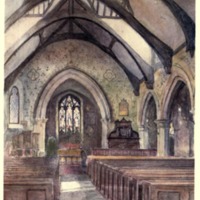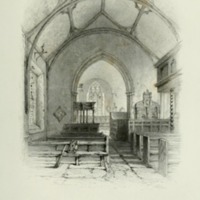Item List (13)
- Tags: Myles Standish
Sheffield's late Mayflower pageant, Drill Hall, Sheffield (February, 1921)
Hugh Parry’s pageant, which you can read more about here, travelled around the UK throughout 1920 and into the next year. In February 1921, it came to Sheffield. The fanfare around the event was huge: newspapers had begun trailing the spectacular in…
Type: Historical Reenactment
A belated Mayflower pageant, Public Hall, Preston, Lancashire (March, 1921)
Lancashire always claimed a certain affiliation with the Mayflower story because of Myles Standish’s local connection. As residents of one of the premier cities in “Standish country”, the people of Preston felt entitled to have their own performance…
Type: Historical Reenactment
"Standish Country", Lancashire (1920)
It was repeatedly said throughout the tercentenary year that many of the people who sailed on the Mayflower had come from the region of Lincolnshire and Nottinghamshire. Lancashire was not home to a large number of the Pilgrims, but it could boast of…
Type: Miscellaneous
Tags: Civic pride, Myles Standish, Tercentenary
Coventry, 350th Anniversary of the Voyage (1970)
In 1970, the influence of the Tercentenary was large enough to be felt in places that had no real claim to the Mayflower story. In Coventry, this even extended to local planning and street names. As reported by the Coventry Evening Telegraph, the…
Type: Miscellaneous
Rivington Pike – Huish and Chettle (1907)
In a rather speculative manner, Marcus Huish (writing in 1907) suggest that the young Miles Standish ‘must have frequented’ the local landmark Rivington Pike ‘if only to gain a larger view of the world around him’. The use of speculation, and…
Type: Tourist Guide
Tags: Myles Standish
Duxbury Hall – Huish and Chettle (1907)
In contrast to Elizabeth Chettle’s romantic illustrations of the English countryside, Marcus Huish provides (in 1907) a less idealised description of industrial Lancaster with its ‘[w]orked-out collieries with tottering chimneys, and windowless…
Type: Tourist Guide
Tags: Myles Standish
Pageant of London, Crystal Palace (Sydenham, 1911)
The Pageant of London was a gigantic and spectacular historical re-enactment in four parts, staged 120 times over the summer of 1911. Linked to the Festival of Empire and Coronation of King George V, it was the biggest and boldest of the pageants of…
Type: Historical Reenactment
Chorley Church, Lancashire – Huish and Chettle (1907)
Marcus Huish visits, in 1907, St Laurence's Church, Chorley, the burial place of the Standish family. The Standish pew was described by Pevsner as "the best example of its type in North Lancashire" and had become another point of interest on the…
Type: Tourist Guide
Tags: Myles Standish
Standish and St Wilfrid's Church - William Henry Bartlett (1854)
On his 1850s tour of Mayflower sites, William Henry Bartlett travels to Standish, Lancashire, the ancestral home of the Standish family. It is not certain whether he was a Separatist, but Miles Standish was certainly one of the most well-known of the…
Type: Tourist Guide
Tags: Myles Standish
Stirling and Hayes ,"A Play of the Pilgrim Fathers", début at Plymouth Repertory Theatre (August, 1920)
In addition to the pageant put on by Rev. Hugh Parry, the Mayflower tercentenary also saw the production of several original plays, including John Alden's Choice, performed in Southampton, and The Seed and the Fruit performed in Exeter. Probably the…
Type: Historical Reenactment

